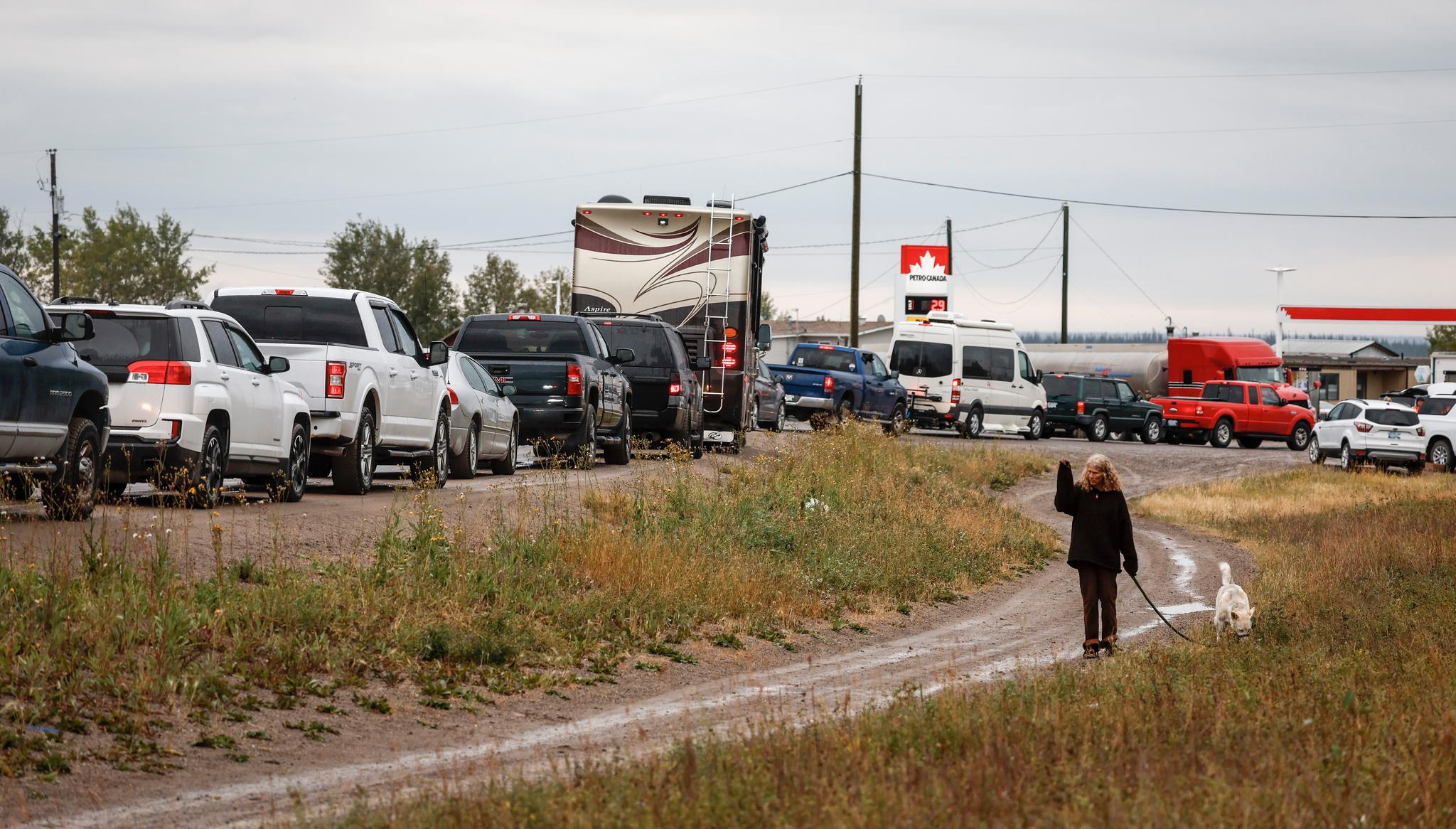Thousands of city residents were evacuated due to a fire. Yellowknife has almost become a ghost town.
The short version
- Yellowknife, the capital of Canada’s Northwest Territories, experienced a mass evacuation due to wildfires.
- Wildfires ravaged across Canada, where 168,000 people had to be evacuated and 137,000 square kilometers of land burned, an area larger than Greece. These fires contribute to significant greenhouse gas emissions.
The summary is created using artificial intelligence (AI) and quality assured by Aftenposten journalists.
Virtually all of the city’s residents fled after evacuation orders were issued due to a massive wildfire approaching Yellowknife, the capital of Canada’s Northwest Territories.
In 48 hours, 19,000 people left the city, 15,000 in motorcades and 3,800 aboard commercial and military planes, towards Alberta, further south.
Around 2,600 people are still in the city, around 1,000 of whom have essential tasks and must remain there until further notice.
The territory’s Environment Minister, Shane Thompson, says the fire situation is critical and anyone left without concrete tasks is risking their own lives and those of others.
A grocery store and a pharmacy are still open, while the last gas station closed Friday afternoon. A bar is open, where tired firefighters can have a beer in the evening.
A firefighter says it’s like having one last beer before the end of the world.
Long lines of cars wait to fill up with gas in Fort Providence, Northwest Territories, on the only southern route from Yellowknife to Alberta.
Several hundred fires in the region
Slightly cooler weather and higher humidity have helped firefighters, who have so far managed to contain the blaze 15 kilometers from the city.
This fire is one of hundreds of fires ravaging the region. Fire spokesman Mike Westwick warns that weather conditions can change suddenly and the fire could reach the city limits.
Eleven planes were dropping water on the fires. A ten-kilometer-long hearth was dug. In addition, firefighters used 20 kilometers of fire hoses and countless pumps to combat the flames.
This fire, which broke out a month ago after a lightning strike, has so far ravaged 1,670 square kilometers. This “isn’t going away anytime soon,” according to Westwick.
The fire is strengthened by dry weather, dense forest and unpredictable wind.
State of emergency in British Columbia
Hundreds of kilometers further south, several homes were engulfed in flames during a larger fire. We are in West Kelowna, British Columbia, where the province’s premier, David Ely, has declared a state of emergency.
– Over the past 24 hours, the situation has evolved rapidly and we find ourselves in an extremely difficult situation in the coming days, say British Columbia authorities in a press release.
Wildfires are ravaging the area around Okanogan Lake, particularly in the hills and mountains above the town of West Kelowna, population 36,000.
Evacuations were also carried out in Kelowna, which has a population of 150,000. In total, more than 2,400 properties were evacuated and an evacuation notice was issued for a further 4,800 properties.
These fires are just a few of the thousands of fires that have ravaged Canada over the past year.
The videos in the article are taken from AP.
Burned by an area larger than Greece
This year, huge fires spread at high speed across Canada, reaching up to 13 provinces and territories across the country.
168,000 people were forced to flee, while 137,000 square kilometers were burned, an area larger than Greece.
This is well above the previous record set in 1989, when 73,000 square kilometers of land burned in an entire year.
There are currently around 1,000 active fires, most of which are out of control.
That’s almost twice as many as last year’s fire season and six times as many as the average over the past ten years. Four people lost their lives in the fires.
So far this year, there have been more than 5,700 forest and brush fires in Canada, well above the average of 2,751.

The image shows active forest fires in Canada. Red dots represent uncontrolled fires. The image was taken on August 19 from Natural Resources Canada’s interactive map.
Huge greenhouse gas emissions
Aftenposten has previously written about how wildfires in Canada lead to significant greenhouse gas emissions.
Fires in May alone resulted in greenhouse gas emissions of 54.8 million tonnes of CO₂, twice the previous record for May. This is also more than the whole of Norway emits in an entire year.
Wildfires are not uncommon in Canada in the summer, but this year they were earlier and larger than usual.
Wildfires are particularly common in the western provinces, but this year several eastern provinces, such as Quebec, Nova Scotia and parts of Ontario, have also been affected by wildfires. uncontrolled forest, writes Reuters.
A warmer climate will lead to more wildfires in the coming years, researchers say.
In New York, historically poor air quality was measured following the fires in Canada.

The Statue of Liberty in New York is visible behind fog and smoke from Canadian forest fires. The photo is from June.

“Passionate pop cultureaholic. Proud bacon trailblazer. Avid analyst. Certified reader.”







